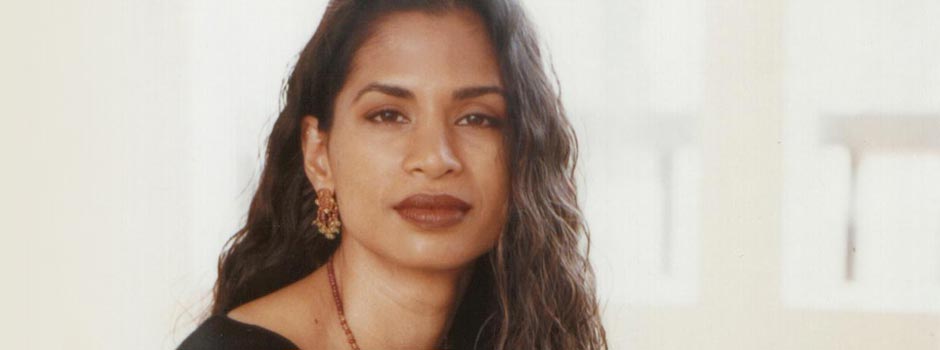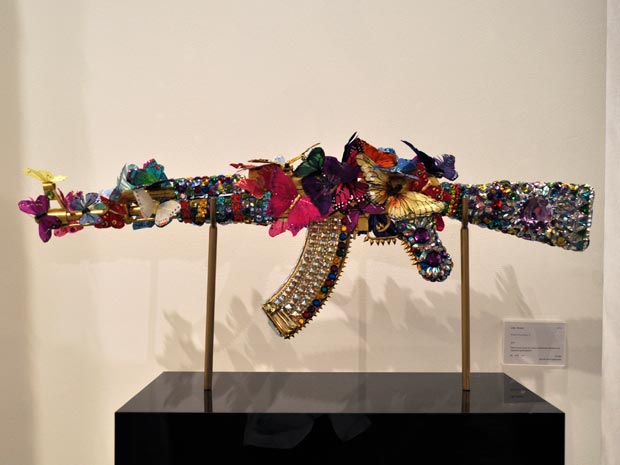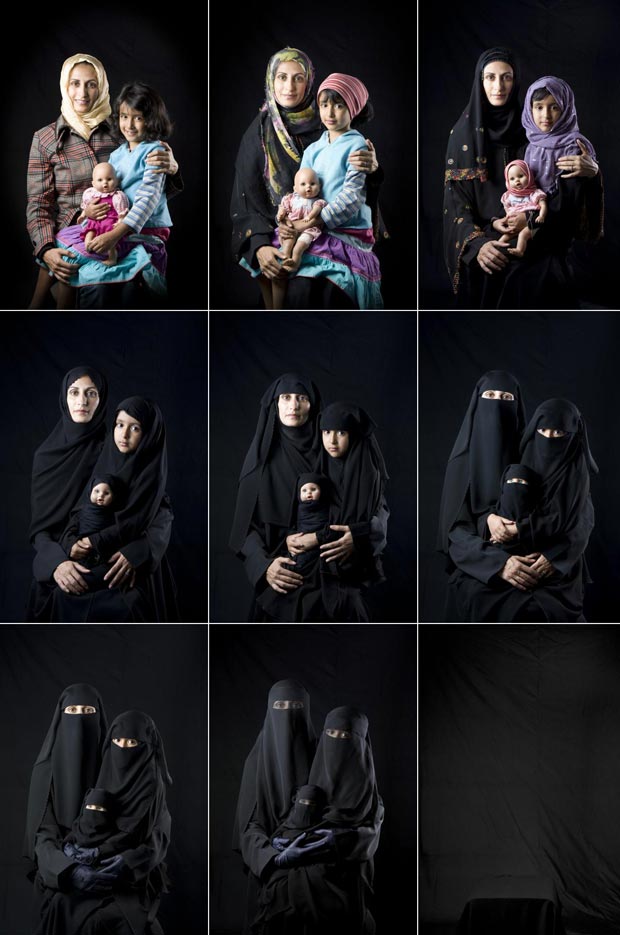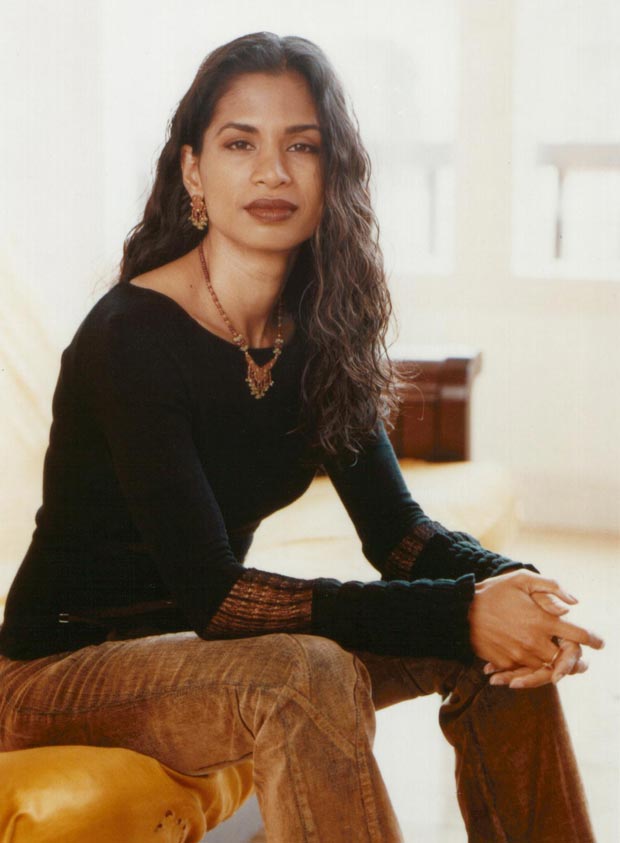
An Interview with Samina Ali, Curator of the IMOW show Muslima: Muslim Women’s Art and Voices
Apr 03, 2013 Interview

The International Museum of Women is focused on vital issues women face globally. Our most recent exhibition, for instance, was on global motherhood. The sad statistic about maternal mortality is that one woman dies from childbirth every 90 seconds. Our exhibition not only spoke to the many different aspects of motherhood, its effect on women, its joys and troubles, but we also had an action campaign designed to deliver 15,000 signatures to the UN to compel countries to begin curbing the high rates of mortality during childbirth.
Our current exhibition highlights Muslim women's achievements and passions, their realities, globally. I want to emphasize that this is a global exhibition. So we are by no means focusing only on women who live in non-Muslim majority societies. We want to include the voices of all Muslim women, no matter where they happen to live in the world.
We have interviewed leading reformers, such as Dr. Shirin Ebadi from Iran, Maria Bashir and Sima Samar from Afghanistan, Fahima Hashim from Sudan, and Zainah Anwar from Malaysia, the founder of Sisters in Islam. We also are representing women artists and writers from different parts of the world, such as Laila Shawa from Palestine and Boushra Almutawakel from Yemen. And we have also included voices and artwork from women in the U.S.
 Where Souls Dwell by Laila Shawa, 2013, Steel, wood, Swarowski crystals, rhinestones, feathers and Japanese gold pigment, 35x90 cm / from Art Dubai 2013 / Photo by Islamic Arts Magazine
Where Souls Dwell by Laila Shawa, 2013, Steel, wood, Swarowski crystals, rhinestones, feathers and Japanese gold pigment, 35x90 cm / from Art Dubai 2013 / Photo by Islamic Arts Magazine
My point in saying all this is that Muslim women live different realities and face different obstacles depending upon where they live. In the U.S., Tayyibah Taylor, the editor-in-chief of Azizah Magazine, is promoting an alternative version of Muslim women than the mainstream media. However, that concern isn't shared by someone like Zainah Anwar, who is more interested in changing the laws in Malaysia that are sometimes designed to strip women of their rights and freedom.
That's the beauty of this global exhibition: Muslim women are speaking in their own voices/through their own artwork to address their personal passions, to tell their personal stories, to express themselves.
What I've seen in my curatorial role is that Muslim women have a two-fold mission. On the one hand, if they live in non-Muslim majority countries, they must face the stereotypes that dehumanize them. On the other hand, if they live in Muslim majority countries, they have to face laws or traditions or patriarchy that dehumanizes them. Boushra's Hijab Series is a haunting series of photographs that shows the dehumanization of women. In the first photo, a mother, daughter and doll are dressed in colorful clothing. Only the mother is veiled. But as the series progresses, you watch the colors of the clothing be replaced with all back veils then burkas. The smiling faces are soon invisible. Even the doll is covered! Does this come from Islam or something else?
 Boushra Almutawakel's Hijab Series / Courtesy of IMOW and the Artist
Boushra Almutawakel's Hijab Series / Courtesy of IMOW and the Artist
These are the issues Muslim men don't face. Women are often victims, their bodies are often the site of men's various power struggles. Among other things, this exhibition is highlighting the many women who are doing their part to bring about reform and justice in both Muslim-Majority and non-Muslim Majority countries through their work.
One of the many benefits of having a virtual museum is that we can include artistic expression of all genres. We're not limited to the visual arts like brick-and-mortar museums. We are all-inclusive: we not only present artwork and photographs and videos and multimedia pieces but we also present fiction and poems and interviews of leading women and we also can include songs! It's incredible what technology has allowed us to do.
Because we're able to present a cross-section of genres, viewers really can pick and choose. If art speaks to someone, they will likely go directly to the Art Gallery. But what's great about our museum is that while in the Art Gallery, that visitor might see a little teaser on the same page linking to a great interview or fiction story on a similar theme as the painting. The viewer clicks and ... boom ... the viewer is now reading and captivated by what s/he is reading.
The opposite is also true. Some visitors come to the site for the interviews and then are slowly drawn to the artwork. We each have a different way of listening, of learning, of engaging. The exhibition has something for everyone. Art is of course a wonderful way of moving across boundaries and borders and differences to find our common humanity. However, art isn't just visual. It's also writing, it's also video, song, and even the work reformers do.
Because this is a global exhibition, my hope is to keep the focus on global voices. The museum is based in California so it's easy to be U.S.- heavy. But we really are doing a mindful job of ensuring that we include the diversity of Muslim women. Right now, we don't have any from Latin America -- so if you know of women there, please let me know!
For me, giving voice to the diversity of perspectives is the most important goal. Diversity in all senses. I'd like to see women from all over the world be part of the exhibition and share their stories and passions. I'd like to see women from all economic backgrounds share their ideas and art. I'd like to see the diversity within the Muslim community -- Shia, Sunni, Sufi, everyone, speaking together as one. I'd like to see the diversity of perspectives from Muslim women because stereotypes often lump us into one category: in the West, that might be the submissive, weak, powerless, veiled women. In Muslim-majority countries, that might also be the weak, powerless woman who needs to be protected and veiled, forbidden from education or driving. Or it might be Muslim-majority countries where Muslim women live full, rich lives with full autonomy, freedom and power. I want those voices too. The point is: there is no ONE Muslim woman voice. Every woman is coming with a rich history and background and experiences and my hope is that this exhibition will represent all that diversity and from the Muslim women themselves. Unfiltered. Now that's powerful.
As a writer, I don't like themes. And many of the women artists bristled against the themes as well. We are artists precisely to break out of boundaries. Not to be limited by them... Unfortunately, the reality of having an exhibition means that work must be placed in some order so viewers know how to navigate the site. If there were no themes, all the work would be in one large black hole. However, with the homepage, we tried to break out of this thematic ordering by having different pieces pop up every single time a viewer clicks on it. You'll never see the exact same tiles appear.
Many of the women reformers I interviewed are under the topic of Leadership. Boushra's powerful photos are under the topic of Myths because in her veil series she's addressing both the Western and Eastern misconception of the veil.
I feel blessed to have been able to provide a platform -- a global platform -- for women to share their stories and ideas and passions with one another in order to build connections and awareness and further the cause of justice.
Let me clarify that the term "Muslima" is being used to include everyone: from women who pray five times a day and call themselves Muslim all the way to women who no longer believe in Islam or God but who are still considered Muslim because of their family or background or traditions. We are being inclusive in order to give voice to as many women as possible. I also feel it's important to enlarge the tent of who we consider Muslim and who is invited inside the tent. As far as I'm concerned, everyone is invited. Diversity is beautiful. How many times does the Qur'an say that?
So, no matter a woman's current beliefs in God/faith, if she is a Muslima, then she can:
One, submit work to the Muslima Stories. Here, we're asking all Muslim women around the world to answer the following sentence in 6 words: "What does it mean to you to be a Muslim woman today?" Women can submit their 6 words along with their photos and we will place them into the exhibition. Forty stories are up right now!
Two, artists of all genres can submit work. For this, we have a deadline of April 15th, so please be quick!
Three, you can add you comments at the end of every single story/artwork/interview on the website and engage in a dialogue with others around the world. This is meant for everyone, men and women, Muslims and people of other faiths. We'd like to create a platform where people can speak across faiths and beliefs to build understanding.
 Semina Ali, author of ;adras on Rainy Days / Photo: © Thayer Gowdy
Semina Ali, author of ;adras on Rainy Days / Photo: © Thayer Gowdy
I'm 100% dedicated to this exhibition until it ends. I've worked as a writer. I've worked as a Muslim American activist. I've worked with the State Department. And everything I've done in the past has really led me to this position. I've been able to bring my contacts, my experience, my passion and unite everything into what you see today. It's my perfect storm. When the work is done, I will move to a different project that simply continues my work in a different platform: the work of giving voice to women and helping to heal wounds and uniting people in compassion and understanding.
Comments
Add a comment